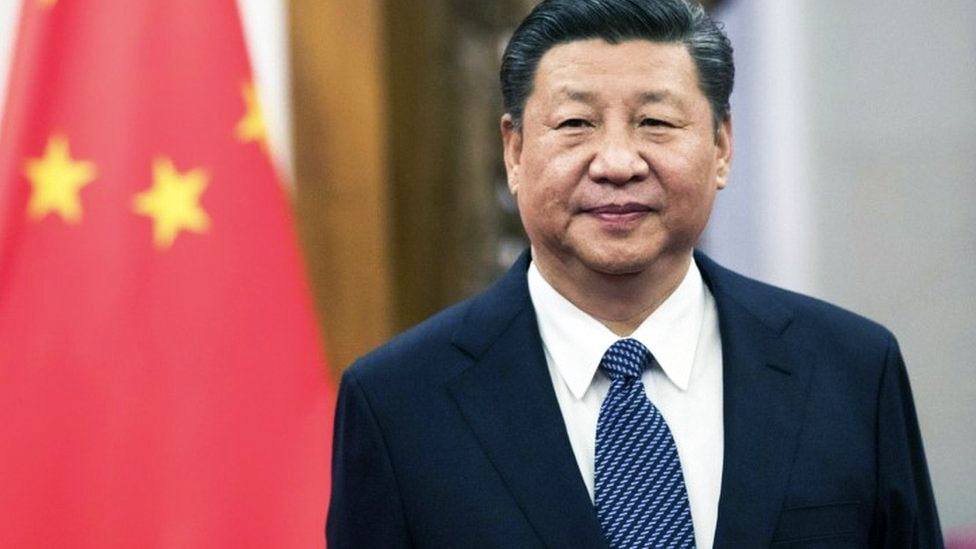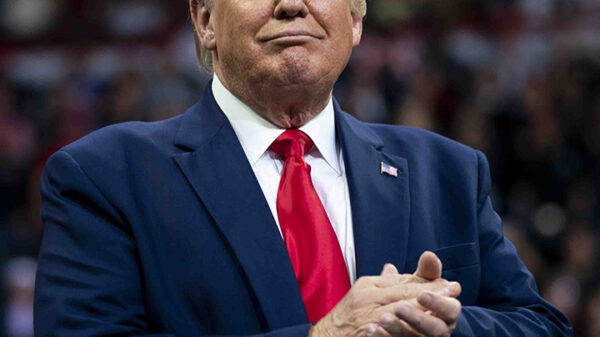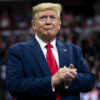Many experts believed the hot exchanges between China and the United States will cease once the Trump administration signs off. That turn of events, however, didn’t come to pass even after the Biden administration eased into office, and the tensions between the two great powers continue to mount.
The United States has castigated China for the forced sterilization of Uyghur women; lobbied Europe to ban Chinese security screening firm Nuctech; imposed visa restrictions on Chinese officials held responsible for Hong Kong’s new national security law; and placed 90-day limits on work visas for Chinese journalists.
In response, China’s Foreign Ministry has branded US criticism of its Uyghur policy as “baseless” while bluntly telling Washington to butt out of Hong Kong affairs. Beijing had earlier withdrawn press credentials for journalists from three leading US newspapers and threatened to put American companies on a list of proscribed foreign entities.
This rapid escalation of Sino-US conflict has taken many by surprise. For most of this century, the competition between the two powers was moderated by a need to work together on a range of global economic, financial, and geopolitical issues that necessitated cooperation.
But these cooperative impulses have almost entirely disappeared, with tensions exacerbated by recriminations over responsibility for the Covid-19 global pandemic, which has exposed the depth of their mutual mistrust.
Beijing thinks Washington is bent on containing China to prolong the waning power of the United States by denying China its rightful place in the sun. Americans increasingly see Beijing as a threat to US security interests, undermining its prosperity, interfering in its democracy, and challenging its values.
Anti-China sentiment unites an otherwise divided and partisan Washington. A common misperception is that mounting differences over trade and technology are primarily responsible for the spike in hostilities. But while important in themselves, the Sino-US trade and tech wars are symptomatic of a deeper and more dangerous geopolitical divide rooted in their clashing strategic ambitions and contrasting political systems.
Amid this environment of heightening tensions, Pakistani military and civilian officials started discussing geopolitical and geostrategic changes in the world with their Chinese counterparts. On 7 September 2020 General Nadeem Raza, Chairman Joint Chiefs of Staff Committee held a meeting with General Wei Fenghe, China’s Minister of National Defence.
The meeting took place on the side-lines of Defence and Security Cooperation Conference, bringing together defence officials from across the Shanghai Cooperation Organization (SCO). An official press release in Islamabad said matters “related to changing the geostrategic environment” came under discussion at the meeting.
What could possibly prompt Pakistani and Chinese military officials to discuss “changing geostrategic environment” in their meeting at Moscow on the side-lines of this high-profile conference? Changes in the India-Pakistan military equation? But no discernible changes had taken place in the South Asian region in the military balance or the geopolitical and geostrategic environment between these two nuclear rivals in those days.
Could it be that some other geostrategic changes were taking place those days and are taking place around us now that warranted a discussion between top officials from the two countries? Not only did the bilateral exchange bring a top general from each nation together, it also involved delegation level talks between the military delegations of China and Pakistan in Moscow, where they were attending the conference of military officials of member countries of the SCO.
The answer to the question raised above is simple: The world is fast moving into a strategic environment where great powers, the United States and China, or two competing blocks of countries, would beconfronting each other at the world stage. The United States is the dominant power or the status quo power, whereas China is a rising power or challenger – a country that will soon acquire enough military and economic capacity to challenge the international status quo.
Most international experts agree that a conflict between the existing and rising powers is inevitable. China is not simply a rising power, it is a country which will soon surpass America as the biggest economy in the world. Some even say Washington is in relative decline.
Consider this: the United States and its treaty allies accounted for 70 percent of the global GDP and military spending in 1994, but in 2015 this figure declined to 60 percent. Also, China accounted for 3.3 of global GDP in 1994, and 2.2 percent of global military spending; its share has since risen to 11.8 percent of the global GDP and 12.3 percent of the world’s military spending.
The gap is still wide but Chinese political ambitions seem to have outgrown its relative economic and military strength. In 2013, Chinese leadership initiated the Belt and Road Initiative (BRI), which has been described by many international experts as part of an ambitious Chinese plan to replace American-led and American-designed international system that was painstakingly constructed at the conclusion of the World War II.
The Forum of Shanghai Cooperation Organization (SCO) itself is part of Chinese plans to build a Sinocentric regional system of states that would rival international institutions built and led by Western world. China is on the path to build economic and political structures that could rival American power at the international stage.
Pakistan has been given a place of pride in the two such structure. Firstly, we have China Pakistan Economic Corridor (CPEC), which is a showcase project of the BRI, the Chinese plan to establish a communication network encompassing more than 50 countries on three continents.
Secondly, China ensured Pakistan’s membership of the SCO and a crucial role for it as country which possessed vast experience in counterterrorism and counterinsurgency. Both these capabilities are greatly valued in the member countries of SCO, where insurgencies and terrorism are rampant.
But the question is how this changing geostrategic environment is relevant to Pakistan – what created the necessity for senior military officials of China and Pakistan to discuss it in a third country?
Firstly, it is relevant to us because soon Pakistan would be confronted with the strategic shift of living without its decades’ old strategic alliance with Washington and the Western world. This may assume urgency as the competition between existing and rising power heats up.
Secondly, this changing geostrategic environment has forced Pakistan’s arch-rival
India into a deep embrace with Islamabad’s erstwhile ally, Washington. There are very strong lobbies in Washington who see India as a counter to the rise of China on the world stage and they are hell bent on using New Delhi against Beijing.
As Pakistani political and military elite have a habit of viewing the outside world through the prism of their anti-India feelings, it is obvious what Pakistan’s reaction to this right embrace would be.
How will the Pakistani state and its political and military elites adjust to this changing geostrategic environment? Firstly, this changing environment will afford Pakistan the opportunity to carry forward the luxury of anti-India feelings and policies into a whole new era.
And secondly, the Pakistani state will suddenly be under no compulsion by its great power patron to curb its authoritarian tendencies. Surely, in no scenario can Beijing be seen wielding a tool like the deeply unsettling Kerry-Lugar Bill dangled by Washington not too long ago.
This new environment will also allow Pakistani state to advertise and leverage its counterterrorism and counterinsurgency expertise and to market it among the friendly countries in the region.
There are six clear parallels with the Cold War. First, the US-China rivalry is between the world’s two most powerful states, one a liberal democracy and the other an avowedly communist power. Second, it is a system-wide contest for global supremacy. Third, it is about values as well as power. Fourth, it will be a multi-decade struggle for global ascendancy. Fifth, a second geopolitical bifurcation of the world is likely. And sixth, neither side wants a full-scale military confrontation. In short, it is not your run-of-the-mill great power conflict.
There are, of course, significant differences between the two Cold Wars. China has supplanted Russia as the main threat. Strategic competition between the United States and the Soviet Union largely played out in the political and military domains with little trade between the two competing blocs. But the main contest between the US and China is economic, which means that trade, investment, technology, and strategic industries are central to today’s rivalry.
At its high point, the GDP of the Soviet Union was only 40 percent of that of the United States. But China’s GDP is already 65 percent that of the US and growing rapidly. Between them, the US and China account for around 40 percent of global
GDP today. If either of these two titans sneezes, the rest of the world catches a cold. The dynamic has been demonstrated literally, as the impact of the Covid-19 global pandemic continues to lay waste the health and prosperity of millions around the globe.
While the new Cold War is playing out across the world, its geographic centre of gravity is the Indo-Pacific, not Europe, because the epicentre of global commerce and trade has moved from the Atlantic to the Pacific, reflecting Asia’s rise and Europe’s relative decline.
The United States and China are both Pacific powers, so their rivalry will be felt most keenly in the Indo-Pacific, particularly at sea, where their interests collide and there are several potential triggers for military confrontation.
How exactly does Pakistan navigate the new Cold War environment and to what extent does it succeed in keeping its own interests foremost remains to be seen. If history is anything to go by, however, the Pakistani state will continue to chart its own course in defiance of all inducements, make its own mistakes in spite of all counsel, and shape its own fate regardless of all influences










